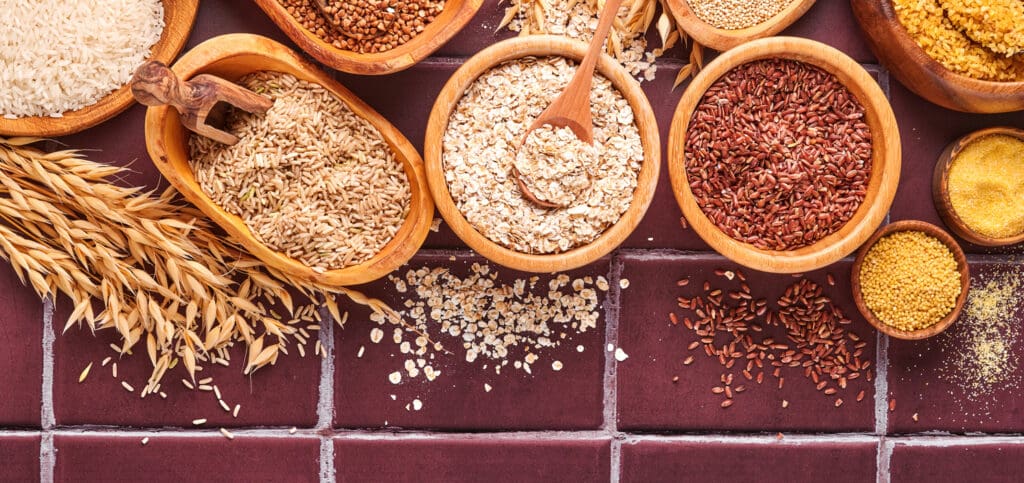
In the conversation around health, nutrition, and sustainable eating, one comparison keeps coming up: ancient grains vs. modern wheat. An ancient grain is a minimally processed, nutritionally dense food with a long history of human consumption across regions like China, Africa, India, and the Middle East. Whether you’re seeking more nutrients, a gentler grain for your gut, or better options for managing your blood sugar, understanding the difference between these two types of grains can transform how you eat and feel.
At Doudlah Farms, we grow heirloom grains like spelt, einkorn, and millet because we believe these nutrient-dense, minimally altered grains—unlike modern grains, which are often hybridized or genetically modified—play a vital role in a healthy diet. Let’s examine how ancient grains compare to modern wheat and why more people are turning back to the past to reclaim their health.
Ancient grains are grains that have remained essentially unchanged over thousands of years. This includes varieties like:
Ancient grains also include buckwheat seed and cooked amaranth, which are considered staple foods in regions like the Middle East and North Africa. Grains like quinoa and farro are valued for being complete proteins and a source of plant-based protein, making them important for vegetarians and those seeking balanced nutrition.
Many ancient grains are highly nutritious, with a mild taste and versatility as a side dish. Bulgur, a partially cooked wheat grain, is a staple in Middle Eastern cuisine. These grains have significant historical and cultural importance in Middle Eastern and North African diets, where they have served as essential staple foods for generations.
These grains are often considered more nutritionally dense, containing essential amino acids, resistant starch, and higher protein content than many refined grains.
Many ancient grains are also naturally gluten-free, making them an excellent option for those with celiac disease or gluten sensitivity, especially when labeled or appropriately certified.
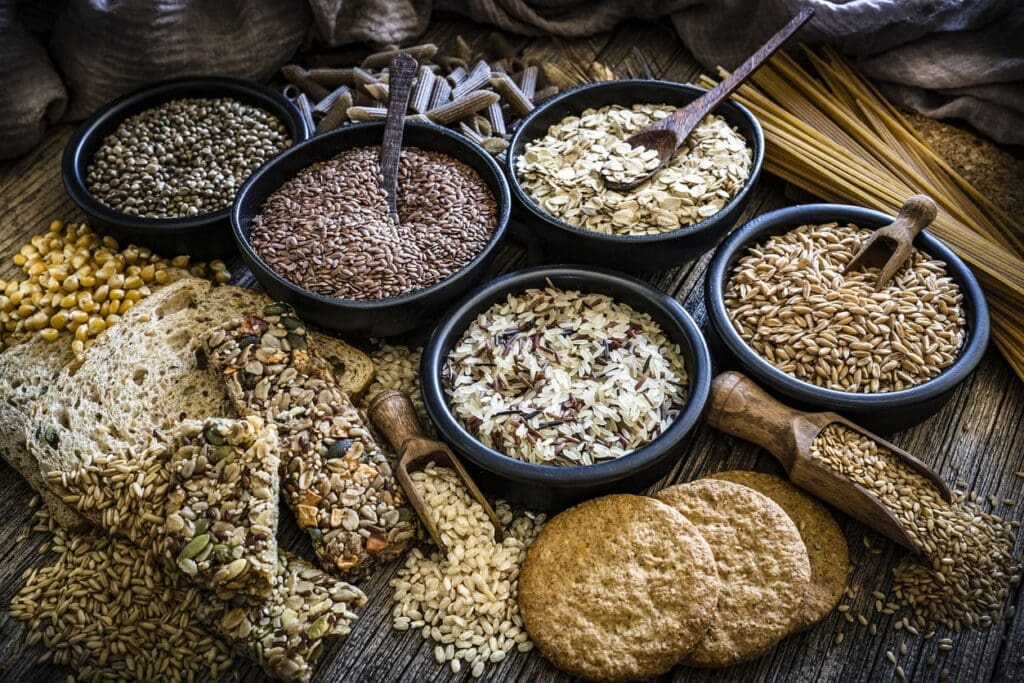
Understanding whole grains is essential to building a healthy diet. Whole grains keep all three parts of the seed intact: the bran, germ, and endosperm. This means they retain their natural fiber, vitamins, minerals, and antioxidants—unlike refined grains, which lose much of their nutritional value during processing.
Including whole grains like brown rice, whole wheat bread, and ancient grains such as amaranth and farro in your meals delivers a powerful nutritional punch. These grains are a rich source of essential nutrients that support everything from improved blood sugar control to lower cholesterol levels. Research shows that eating more whole grains can help reduce the risk of chronic diseases like heart disease and type 2 diabetes.
Whether you’re enjoying a bowl of brown rice, a slice of whole wheat bread, or experimenting with grains like quinoa or millet, choosing whole grains is a simple way to boost your health and keep your blood sugar steady.
What Is Modern Wheat?
Modern wheat, or common wheat (Triticum aestivum), has been heavily hybridized over the past 70 years to improve yields, shelf life, and baking qualities. However, these changes have led to:
Compared to ancient wheat grains such as Khorasan wheat, modern wheat grains generally have lower protein, mineral, and nutrient content, and are less digestible and tolerable for sensitive individuals.
Modern wheat is often harder to digest because of its altered structure and processing, and may contribute to gut health issues, blood sugar spikes, and inflammation in sensitive individuals.
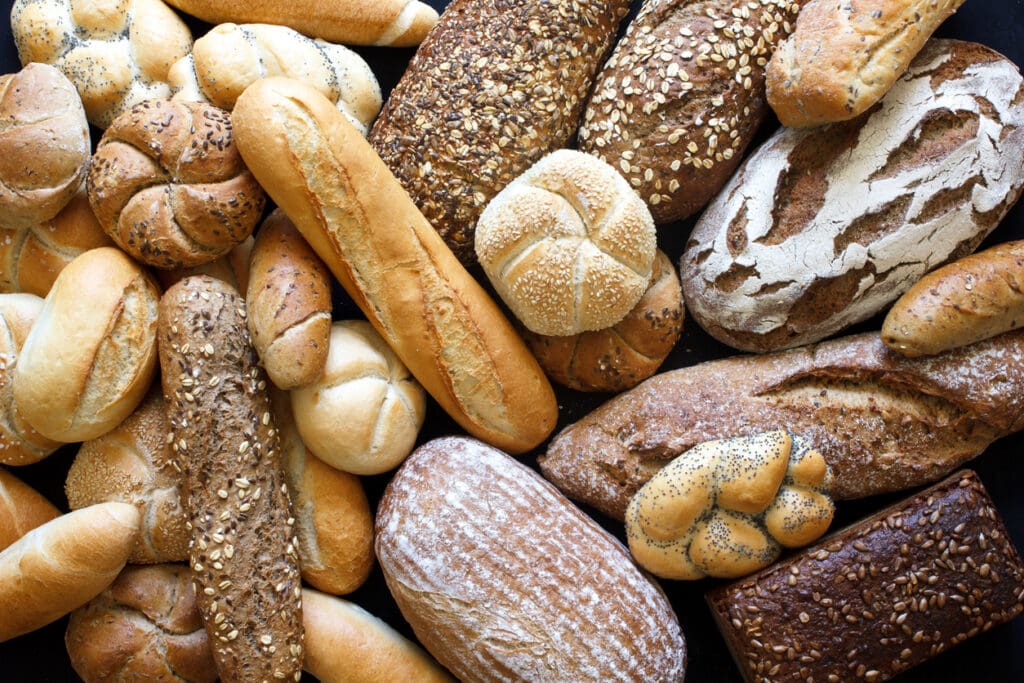
Refined grains have become a staple in many modern diets, but their journey from field to table strips away much of what makes grains healthy. Refined grains lose the bran and germ during processing, leaving only the endosperm. This results in products like white flour and white rice, which lack whole grains’ fiber, vitamins, and minerals.
While some nutrients—such as iron, thiamin, niacin, and folic acid—are added back through enrichment, refined grains still fall short of the original nutritional value. Foods made with refined grains, like many baked goods, pasta, and cereals, may taste familiar, but they don’t offer the same health benefits as whole grains.
Regularly consuming refined grains has been linked to a higher risk of cardiovascular disease, type 2 diabetes, and even certain cancers. For a truly healthy diet, limiting refined grains and focusing on whole grains that deliver the full spectrum of nutrients your body needs is best.
Heirloom Grains Benefits: Why Choose the Old Ways?
At Doudlah Farms, we grow heirloom grains because of their incredible nutritional benefits and lower likelihood of triggering digestive issues. In addition to our heirloom varieties, other grains offer similar nutritional benefits and are part of the ancient grain family. Here’s why people are switching back to older grains:
Ancient grains tend to be easier to digest than modern grains. Grains like spelt and einkorn contain less gluten and more resistant starch, which supports a healthy gut microbiome and better fiber content.
Grains like einkorn contain more protein, antioxidants, and amino acids than modern wheat flour. Some ancient grains, such as quinoa and farro, are considered sources of complete protein and provide high-quality plant-based protein, making them especially valuable for vegetarians and those seeking balanced nutrition. Many of these grains are also rich in phenolic acids, vitamins, and minerals, which support immune function and bone health.
Whole ancient grains release energy more slowly, helping support blood sugar control and reducing the spikes often associated with refined grains like white rice and white flour.
Grains like millet, buckwheat seed (a pseudocereal rich in carbohydrates, protein, vitamins, minerals, and antioxidants), and sorghum are great gluten-free grain alternatives that offer texture, flavor, and nutrition without the gluten.
One of the most common heirloom grains we grow at Doudlah Farms is spelt. Compared to modern wheat, spelt offers:
Spelt is technically a form of wheat, but it has not been hybridized like modern wheat, making it a good alternative for those looking to eat more whole grains without discomfort.
Einkorn vs. Modern Flour
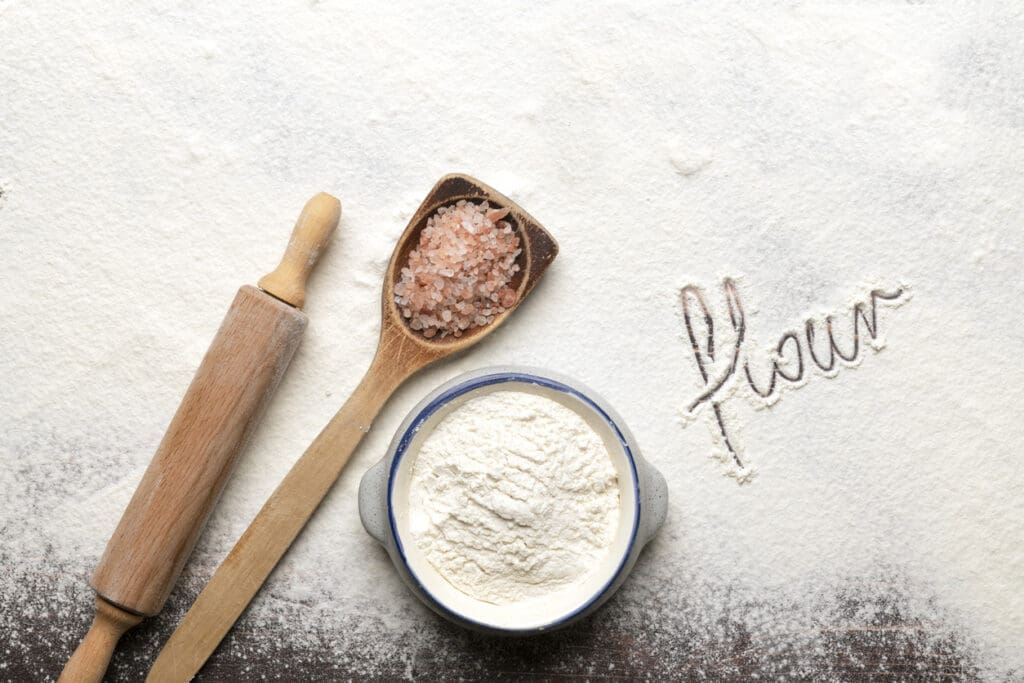
Einkorn is the oldest known cultivated wheat grain, with just 14 chromosomes compared to modern wheat’s 42. This simple structure means:
Many customers at Doudlah Farms who can’t tolerate modern wheat find that einkorn allows them to enjoy bread, baked goods, and grains again, without discomfort.
Nutrition Guidelines: Making the Healthiest Grain Choices
Making wise choices about the grains you eat can significantly impact your overall health. The Whole Grains Council and the latest Dietary Guidelines for Americans recommend that half of your whole grains be whole grains. For most people, that means aiming for 3 to 10.5 ounces of grains daily, focusing on whole grain options.
Look for labels that say “100% whole grain” or “100% whole wheat” to ensure you’re getting the real deal. Ancient grains like quinoa, amaranth, and farro are excellent choices—they’re naturally gluten-free, packed with essential amino acids, and offer impressive nutritional benefits, including higher protein content and more fiber than many modern grains.
By including a variety of whole grains, especially ancient grains, you’ll enjoy better blood sugar control, improved digestion, and a stronger foundation for long-term health. Whether you’re gluten-free or simply looking to add more nutritional value to your plate, entire grains are an innovative and satisfying choice.
At Doudlah Farms, we focus on growing regeneratively farmed, certified organic ancient grains. That means:
Our grains are carefully harvested, cleaned, and stone-milled on-site, preserving freshness, flavor, and essential nutrients.
Final Thoughts: Why Ancient Grains Matter Today
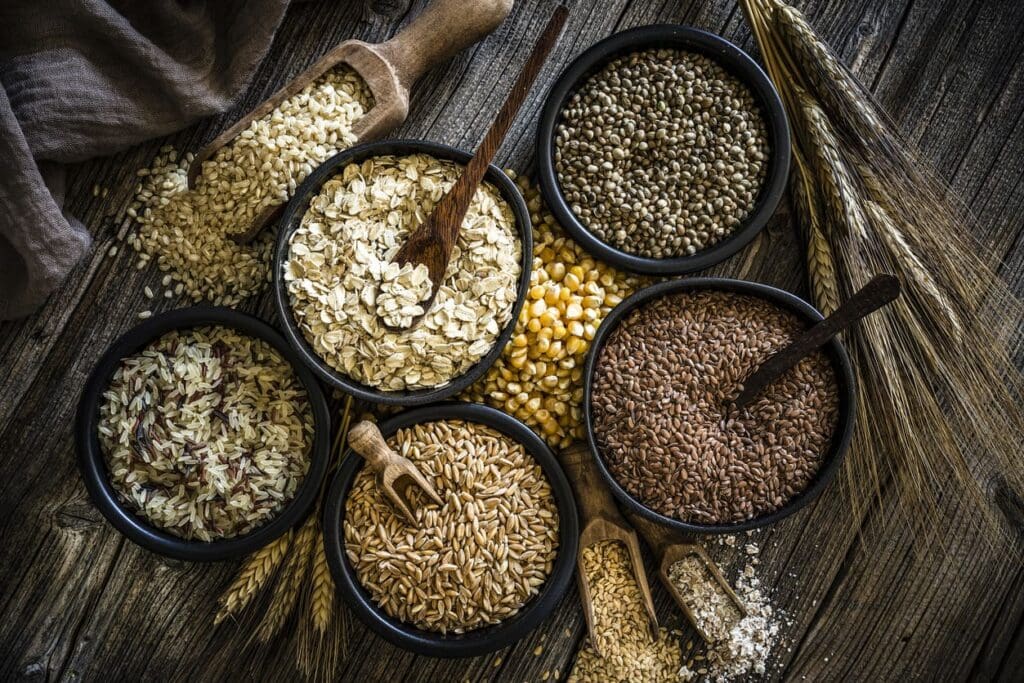
Understanding the difference between ancient grains vs. modern wheat is more than a history lesson—it’s a blueprint for better health. If you’ve been struggling with bloating, poor digestion, or blood sugar swings, switching to whole grains like spelt, einkorn, or millet may help you regain energy and improve your overall well-being. Ancient grains have also been shown to help lower LDL cholesterol, reduce total cholesterol, and support healthy blood pressure as part of their cardiovascular benefits.
Doudlah Farms is proud to offer grains that nourish people and the planet. By choosing heirloom grains, you’re supporting a healthy diet, sustainable farming, and food that makes you feel good from the inside out.
Explore our full collection of organic heirloom grains—including stone-milled flours, whole kernels, and pantry staples—at
👉 www.doudlahfarms.com